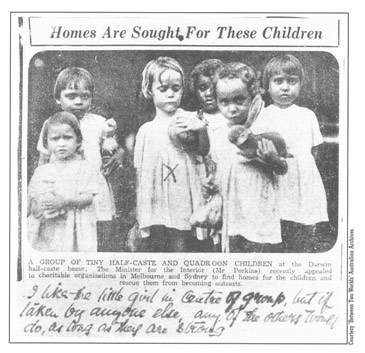Stolen Generations
Abuse of stolen children
Aboriginal children stolen from their families were often abused by mission personnel and foster families but also by other children. Many can't bear their traumatic memories, never speak about them and take them into their grave.

Wishing you knew more about Aboriginal culture? Search no more.
Get key foundational knowledge about Aboriginal culture in a fun and engaging way.
This is no ordinary resource: It includes a fictional story, quizzes, crosswords and even a treasure hunt.
Stop feeling bad about not knowing. Make it fun to know better.
Abuse in institutions and missions
Many non-Aboriginal people today believe that Aboriginal children were taken from their families because parents couldn't look after them. This is one of the myths about the Stolen Generations.
The children were, in fact, mistreated and abused, if not by their supervisors then by the other children who had to harden to survive.
Children, even very young ones, were stripped of their names and only called by a number. Boys were flogged for wetting their bed or chained to a tree all alone overnight. The children were told that they weren't Aboriginal, that their mothers didn't want them or were dead. [1]
Boys were sent "down the line" to be punched by each of their fellow inmates, from the oldest to the youngest, as many as 60. If someone dared not to pull their punches they might be ordered down the line next. [1]
Roy Stewart was removed from his family when he was just three years old. Until he died aged 77 he was haunted by the memories of what he witnessed at the Kinchela Boys' Home in NSW, one of the most violent and abusive institutions. He was made to bury other boys who had been bashed to death by drunken supervisors. [2]
Institutions were a "training ground for jail" says Roy's brother who has spent almost 30 years in jails. "You'd have your first fight on day one. They'd throw another bloke at you on day two and rate you." Today Roy's brother has dozens of counts on his criminal record, many of them for bar fights, a continuation of what he had learned at the boy's home.
It is reported that about 10% of those stolen children sent to institutions were sexually abused. [3]
Embarrassment [about having to strip to be beaten with a cane] was soon forgotten and replaced by an unbearable pain. Welts appeared around our inner legs followed by multiple green and red bruises, which took days to heal. Boys who spent time in Kinchela [mission] and received this sort of punishment remembered it long into their adult lives.
— Bill Simon, taken away aged 10 [4]
The real reason [for solitary confinement] was to keep the boy out of sight until his lacerations healed.
— Bill Simon [4]

Abuse in white families
When the stolen children reached the age of 15 or 16 they were sent into white farms and households. Girls had to work as domestic servants while boys worked with cattle or crops.
These children were exploited. They had to work from as early as 6am to 10pm, seven days a week. As many as 20% were abused [3], physically and mentally, during these years.
Warning: The following source might upset you.
Valerie Linow was a domestic servant for a white grazier family [5]. When she was 17 she spilt a bucket of milk and never expected what would happen to her:
"He yelled out to me, 'Get inside!' And the next minute, he just belted me. He yelled and had this fence wire and just belted me across my legs and I doubled up. Today, I still wear marks here on the top of my legs 'cause I was doubling up trying to protect myself."
"And the elder...elder girl, she was about 10, and I could hear the girl calling, 'Give it to her, Daddy! Give it to the nigger!'"
"And the next minute, he yells out to me, he said, 'Valerie, get in here.' He said, 'You didn't do the girls' room properly.' And that's... I went into the girls' room and then that's when he raped me. He just threw me on the bed and just raped me."
Valerie had the guts to report the incident to police. The grazier was not charged.
This is not an isolated story. The abuse many children of the Stolen Generations suffered is passed on in one way or another to their own children. Their personal trauma becomes a transgenerational trauma.
One in 11 girls became pregnant while apprenticed, one in 12 died, and one in seven ran away.
— Aboriginal Protection Board's ward registers, 1916 to 1928 [6]
Video: Marjorie Woodrow talks about her experiences
Stolen from her parents when she was 2 years old, Marjorie suffered abuse in many children's homes.